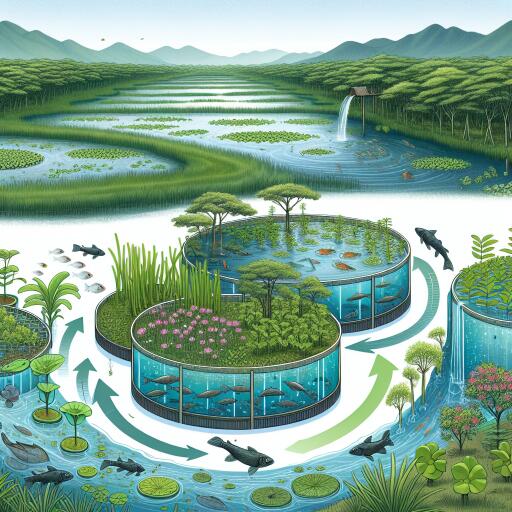
Reviving Wetland Wonders: How Aquaponics is Protecting Manipur’s Aquatic Biodiversity – Today News Gazette
The convergence of sustainable agriculture and environmental preservation is exemplified in the innovative approach of aquaponics, a technique crucial for the protection of wetland ecosystems. By blending aquaculture, the farming of aquatic organisms, with hydroponics, which is a method of growing plants without soil, aquaponics presents a forward-thinking solution to the growing threat against freshwater ecosystems, notably aiding in the conservation of aquatic biodiversity.
Wetlands are vital ecosystems offering crucial ecological benefits such as water purification, flood control, habitat provision for a diverse array of species, and carbon capture. Despite their immense importance, these ecosystems face significant threats from urban development, pollution, and the impacts of climate change, leading to the alarming loss of nearly 35% of the world’s wetlands in the past century. This underscores the urgent need for intensified conservation efforts.
Aquaponic systems operate as integrated environments where the waste produced by fish supplies essential nutrients for plant growth, while plants, in turn, cleanse the water for fish habitats. This symbiotic relationship drastically reduces resource consumption and waste output compared to conventional farming approaches. Recent findings from sustainable agriculture research highlight that aquaponic systems can reduce water usage by up to 90% compared to traditional farming methods.
Integrating aquaponics into wetland restoration not only bolsters food production but also acts as a catalyst for ecological regeneration. By reintroducing native flora cultivated through aquaponics, these systems can help stabilize soils in rejuvenated areas and foster habitat recovery for local wildlife.
Community-driven projects across regions, notably in Southeast Asia, demonstrate how aquaponics can breathe new life into local economies while nurturing biodiversity. In rural parts of Southeast Asia, where traditional fishing practices waned due to overfishing, communities adopted an aquaculture-aquaponics model offering alternative revenue streams while rejuvenating native fish populations.
Academia is increasingly investigating how aquaponics can support specific aquatic species in controlled environments. A study at a leading environmental science university discovered that cultivating native fish alongside local plant species not only bolsters productivity but also builds resilience to environmental stressors.
Realizing the full potential of aquaponics in global wetland conservation demands ongoing education and technology transfer to farmer communities near wetlands. Training in hybrid farming techniques will be essential in ensuring these practices are sustainable.
Collaboration among ecologists, agricultural specialists, policymakers, and local communities is fundamental. Such alliances can develop robust strategies finely tuned to tackle the unique challenges faced by regional wetland habitats.
In our quest to address food security and environmental conservation challenges simultaneously, aquaponics emerges as a critical practice. It is not merely an innovative farming method but a vital component in combating the loss of biodiversity in globally significant ecosystems like wetlands. By dedicating efforts to broaden these practices without compromising biological integrity, we move towards a healthier planet with flourishing aquatic life that complements our developmental needs.





Leave a Reply